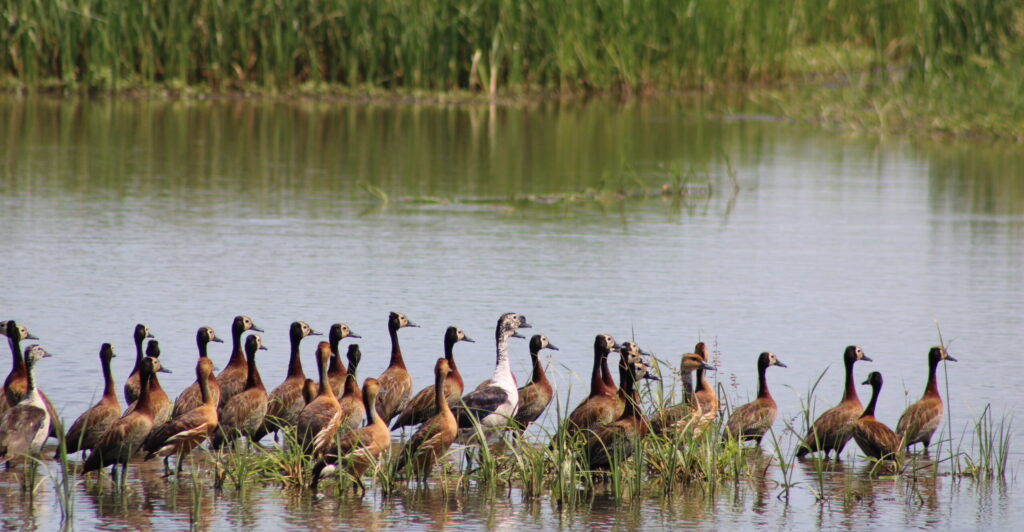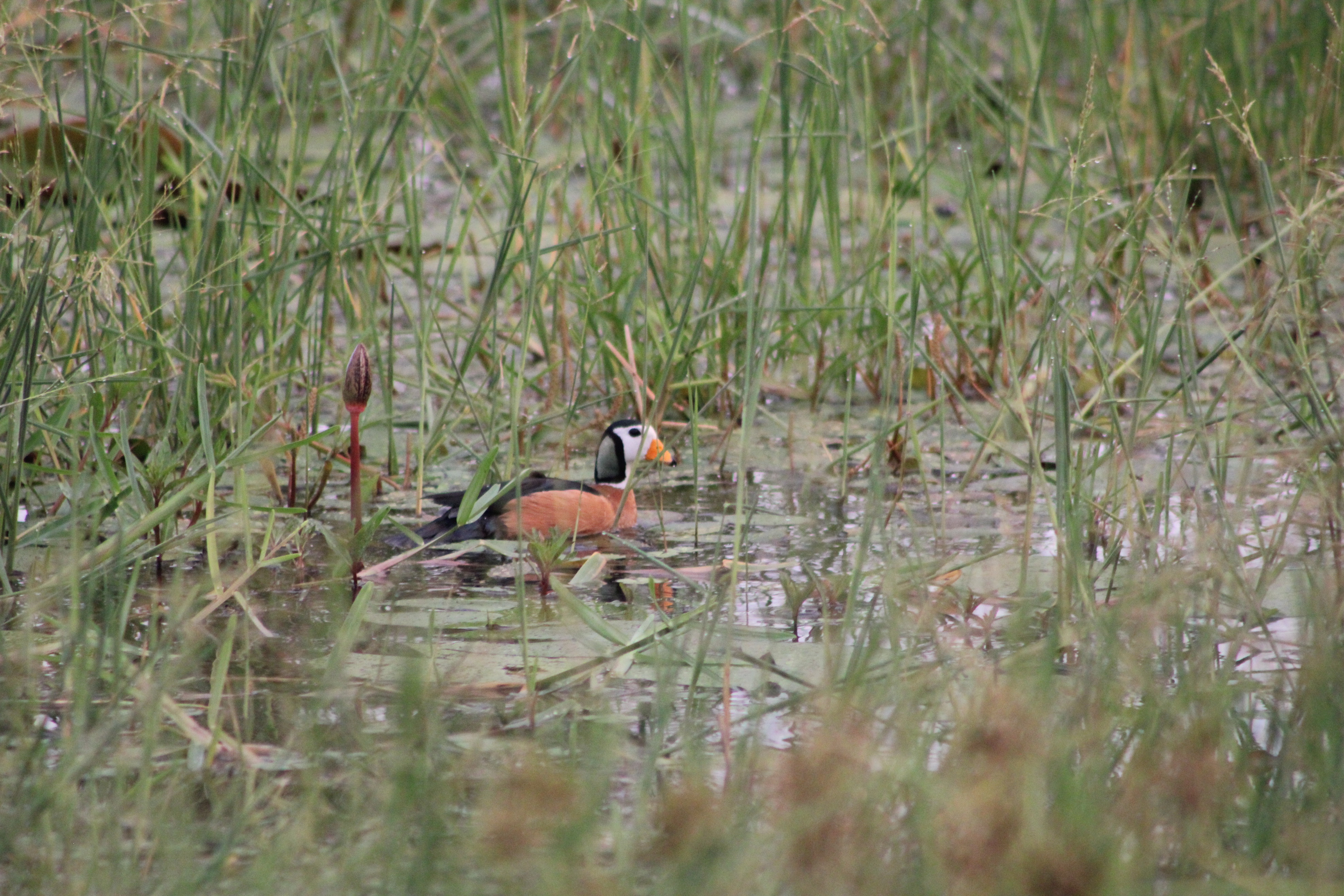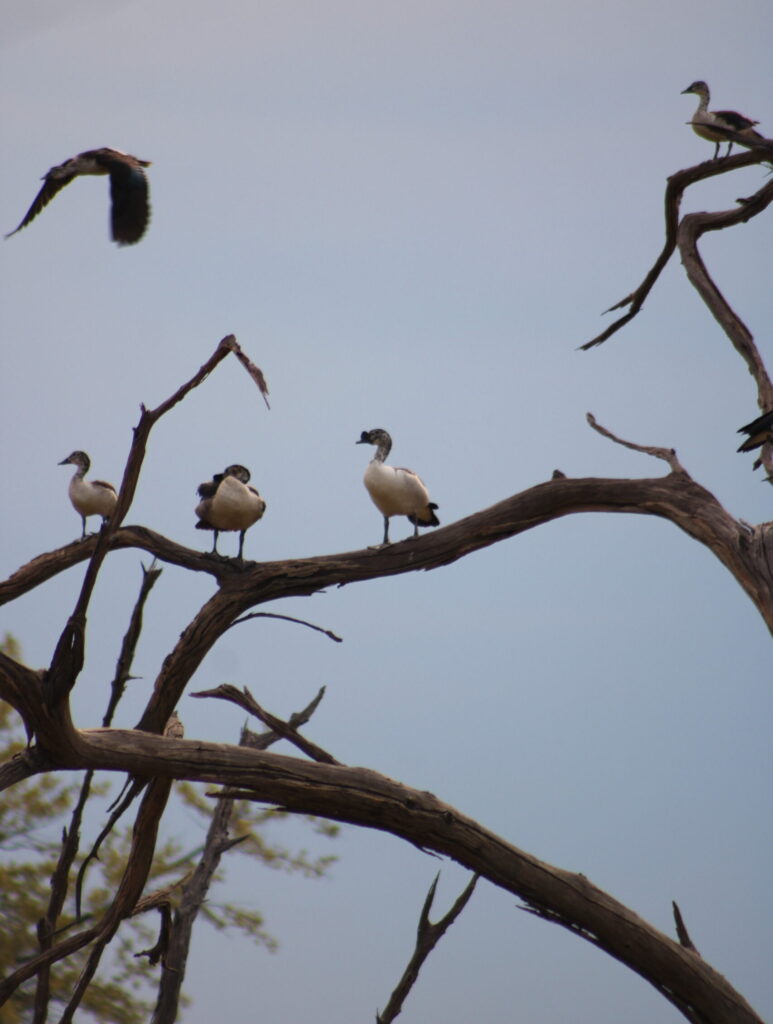by Emma Landenberger of the University of Vermont
The delta is home to an incredible number of birds. They have beautifully colored bee-eaters and rollers, striking birds of prey such as the Amur falcon or Tawny eagle, and graceful storks and herons. One subsection of birds is unique to the rest. With its webbed feet and flattened bill, ducks and geese stand out among the crowd.
The common species of geese and ducks seen thus far as White-face Whistling Ducks, Spur-winged Goose, Knob-billed Duck, Egyptian Goose and Pygmy Goose. Each has its own personality just as it has its own niche. These birds are wonders to see and observe. Pictures cannot do these beings justice so here is my attempt to tell you all about them.
First, White-faced whistling ducks (Dendrocygna viduata) are the epitome of group think. All it takes is one to panic as we drive up and they all do, beginning a mass exodus filled with lots of commotion and their distinctive whistle ‘whit we-weeer’ only to land on the other bank and stare at us. Their stares can never be taking seriously with their goofy white masked faces. This goose also has a white face, but their elegance is enhanced by their blue iridescent wings and back.
Spur-winged goose (Plectropterus gambensis) are the largest of the common geese and ducks we see. Their presence never goes without noticing. When they take flight, their class is highlighted by their wings shining in the bright sunlight, pulling you into their beauty. These geese do have one quirk. You can regularly find them roosted in trees. I do not know about you, but this was new information to me. But yes, these elegant geese can be found perched in groups in trees along the water.
Next comes the drama queen of the group; Egyptian Goose (Alopochen aegyptiaca). Its “eyeliner” coloration and emerald accented wings are only a disguise for this is no goose. It’s in fact, a duck. They will never let you get a close enough look to catch it in its lie. They too immediately take flight when you come too close and let out a loud repeated honk. You become very aware of how much you have inconvenienced them.
The African Pygmy Goose (Nettapus auritus) is also beautifully colored. With an orange body and green accented head, it sticks out from the crowd. This beauty is not shared equally. The males are much more vibrant and are the only ones adorned with the emerald green. It is one way to prove masculinity…
Knob-billed Ducks (Sarkidiornis melanotos) takes proving masculinity to a new level. They have a large, rounded knob on their face which swells when they are ready to mate. Their egos do not go too long without being checked. When it isn’t breeding season, the knobs deflate and become a much smaller size.
All these ducks and geese each have distinct personalities which seem to line up with their physical characteristics. Whether that’s truly how they are or the stories us viewers love to put upon them, these animals are extraordinary and unique. They bring beauty to the waters of the delta, and they bring enjoyment to the observer.





